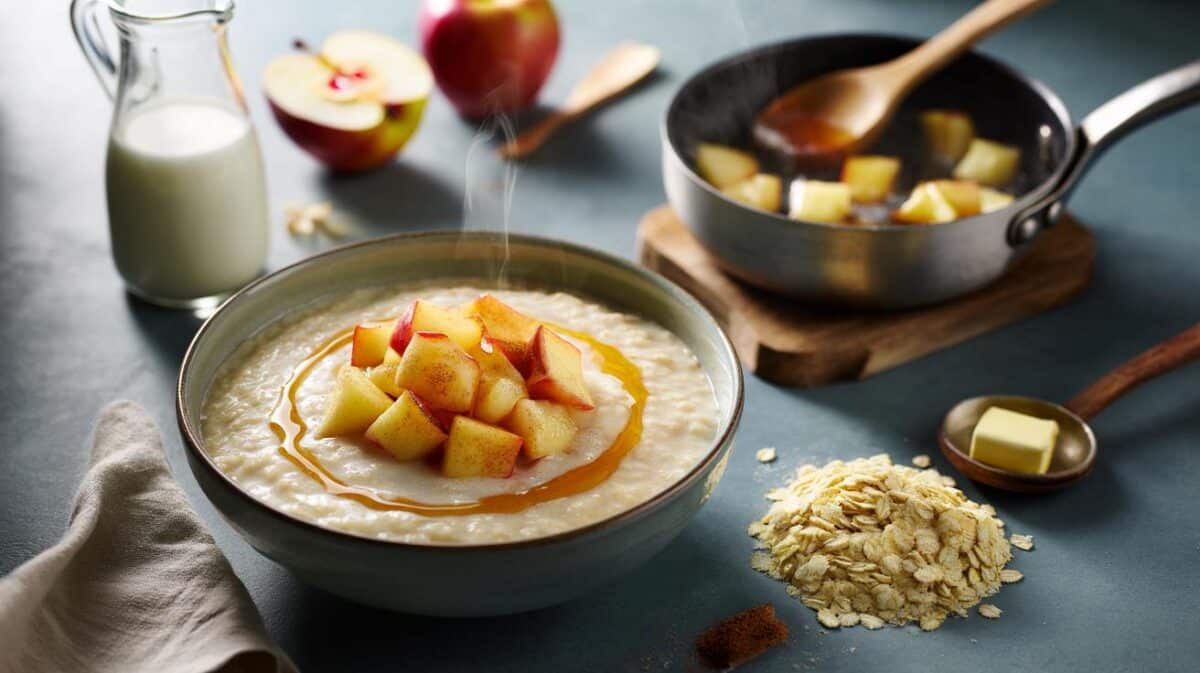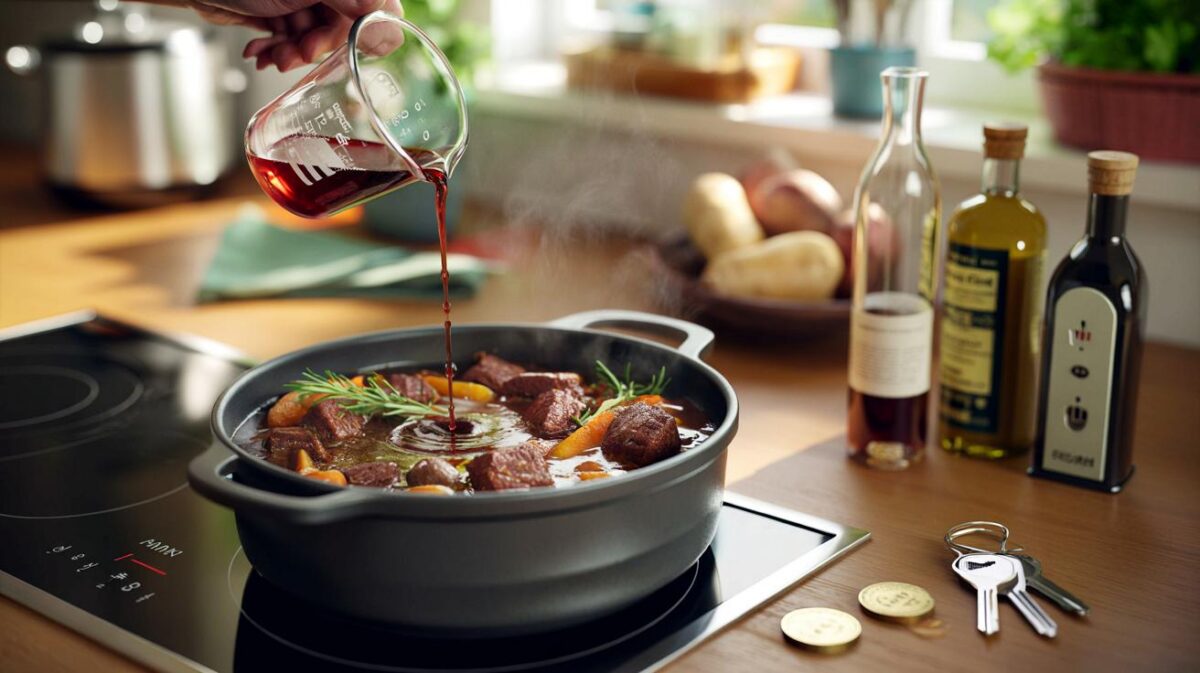Paul Foster has stepped off the dining-room floor and turned on the camera. The Michelin-starred chef behind SALT in Stratford-upon-Avon built a career on precision plates and quiet graft. Now he wants to show you how great food actually gets made, mess and all.
From cupcakes to fine dining
Foster’s story starts in Coventry pub kitchens, where his mum ran the food and he learned the rhythm of service. At 10 he baked cupcakes for the doormen and watched trays vanish in minutes. He saw what a warm plate can do to a room full of strangers.
By 13 he cooked recipes from Gary Rhodes’ books at home. He chased that spark you only get when a dish lands, hot and right, and faces light up. The heat, the noise, the urgency of tickets arriving at the pass shaped him long before culinary school or headline stages.
He never cooked for a star on a plaque. He cooked for the look on someone’s face when they took a bite.
That aim sharpened across kitchens at home and abroad. Technique layered over instinct. Menus tightened. The ambition to run a small, personal restaurant near his Coventry roots never dimmed.
Eight years, one star, and a hard choice
SALT opened in Stratford-upon-Avon as that dream in bricks and mortar. The room was small on purpose. The food leaned on British seasons and an eye for detail. A Michelin star followed, ticking a box Foster had chased since his teens. Then reality bit. Diners cut back. Treat meals slipped from monthly to occasional. The sums got harder to make work.
An eight-year run ended not for lack of craft, but because the cost-of-living squeeze turned luxury into a calculation.
He weighed the next lease and pressed pause. Not on cooking. On the overheads, the fixed seats, the calendar that sets your life by bookings and bills. He chose to work with cameras and chefs instead, away from a single dining room and closer to the kitchens that built him.
Key milestones
- Age 10: baking cupcakes in Coventry pub kitchens run by his mum.
- Age 13: cooking through Gary Rhodes’ dishes at home.
- Opening SALT in Stratford-upon-Avon with a compact, seasonal menu.
- Achieving a Michelin star and sustaining it across service after service.
- Closing SALT after eight years as diners cut back on fine dining.
- Launching Food Unfiltered on YouTube to lift the lid on elite kitchens.
The leap to Food Unfiltered
Food Unfiltered says what it is. No gloss. No staged pours. The plan is to go inside serious kitchens and show the work as it happens: prep, service, suppliers, and the quiet discipline that underpins a plate that looks simple and eats clean. Short films and longer features will follow chefs as they set menus, take deliveries, fix mistakes, and call the next pick-up.
Kitchen truth, not kitchen theatre: process, pressure, problem-solving, and why a plate costs what it costs.
The move fits a wider shift. Chefs now build audiences directly. They share methods and ideas while shaping their own schedule. The trade-off is real. You swap bookings for views, critics for comments, and a maître d’ for an upload queue.
Old life versus new life
| Restaurant service | YouTube production |
|---|---|
| Fixed hours, fixed seats | Rolling hours, flexible output |
| Revenue from covers and drinks | Revenue from ads, sponsors, classes, books |
| Daily prep, service, cleanup | Planning, filming, editing, community |
| Menu changes by season | Content shaped by feedback and data |
| Local guest base | Global audience |
What this means for diners
This isn’t a goodbye to the region’s food. It’s a change of address. If you loved SALT, you can still cook along with Foster and learn how dishes travel from idea to plate. That knowledge helps when you eat out. You’ll see the labour in a sauce that takes days and the timing behind courses that land tight to the minute.
Great meals still sit within reach: look for weekday lunches, set menus, and pub kitchens that cook with care.
Stratford-upon-Avon loses a star badge on the map, but Coventry and Warwickshire remain hungry. Independent kitchens keep pushing. Farm-led places keep shaping menus around supply. Pubs sharpen their offer to win regular trade. Value now means dishes that carry technique without the white-tablecloth spend.
If you’re a young cook reading this
- Start small: cook family meals, repeat them until they land every time.
- Read recipes from chefs who explain technique clearly; cook them, then adapt.
- Ask to stage. One day on a prep bench teaches more than a week of videos.
- Track costs. Price a dish at home. Ingredients, energy, time. See what it really takes.
- Build a notebook. Record ratios, timings, and what went wrong. Patterns appear.
- Use your phone well: film tidy, short, useful clips; share what you learned, not just the win.
Why the pivot makes sense now
Guests still love a special meal, but many now plan them further apart. A chef can either trim the offer to chase price points or change the platform. Foster chose the second route. He keeps his subject—food—while reducing risk. With a camera, he can visit multiple kitchens, share skills, and keep standards high without the weight of rates, energy bills, and staff rotas pinned to one postcode.
Media also lets him talk directly about cost and craft. Viewers can watch a consommé clarify, a pigeon rest, or a sauce mount, then try the bits that suit home cooking. That mix—pro technique, real-world tweaks—turns a channel into a classroom you can pause.
Risks and rewards of going online
- Reward: creative control and direct contact with people who care about food.
- Reward: multiple income lines—ads, sponsorships, classes, pop-ups, and books.
- Risk: volatile views and algorithms that can bury a great film without warning.
- Risk: less feedback from plates cleared and more noise from comments.
- Mitigation: consistent upload plans, clear themes, and collaborations with trusted kitchens.
Useful context for readers
How do Michelin stars work? Inspectors judge consistently excellent cooking, not linen count. They look at ingredient quality, harmony of flavours, mastery of techniques, the personality in the food, and consistency. A star does not freeze a chef in place. It marks a period when a team hit those notes service after service.
How can you eat well for less during a squeeze? Target lunch. Many chef-led places run shorter midday menus with the same level of care. Watch for final-hour bakery discounts. Pick pubs that make stocks and sauces rather than rely on packets. Spend on seasonal things at their peak; they need less done to them and taste better.
What to expect next from Food Unfiltered
- Behind-the-pass days with UK chefs who shape plates around farms and fishmongers.
- Ingredient deep-dives that show why a simple leek or mackerel can carry a menu.
- Technique primers—stocks, emulsions, pastry basics—with home-friendly steps.
- Supplier visits that show fair prices, waste reduction, and how to use the whole product.
- Pop-up dinners where camera and stove meet for one-night menus.
If you care about food, this shift gives you access. If you cook at home, it gives you steps that shorten the gap between your stove and a professional pass. And if you still want to sit down for a big night out, the region has rooms that will make you glad you booked. The path began with cupcakes at 10, a Rhodes recipe at 13, and a small dining room that reached a star. Now it runs through a lens. The craft remains the same: cook honestly, teach clearly, and send out plates—real or virtual—that make people feel looked after.









Back it? Yes—this is exactly the kind of behind-the-pass honesty food media needs. If Paul can show the graft, costs, and corrections that make a plate sing, the channel could teach more cooks than a decade of services. Subscribed.